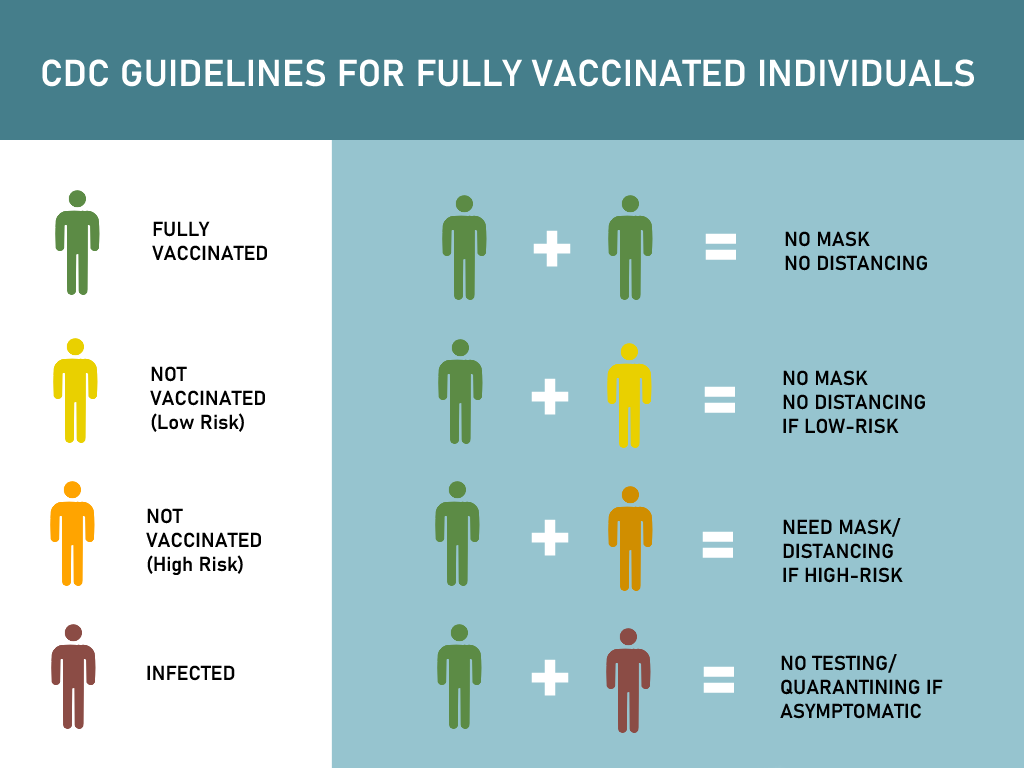The Centers for Disease Control and Prevention’s newly released guidance for people fully vaccinated against coronavirus has not changed Stanford’s policies around gatherings, households and vaccinations, according to University spokesperson E.J. Miranda.
The Santa Clara County Public Health Department wrote in a statement to The Daily that “the County is waiting for the State’s guidance regarding the new CDC statement” before addressing the recommendations’ implications for colleges and universities.
Stanford Health Care recently began vaccinating workers in education whose jobs put them at risk of COVID-19 exposure. The Daily reported on Feb. 26 that some student staff have successfully scheduled vaccine appointments, though their eligibility has remained uncertain.
People who are fully vaccinated — two weeks after their second dose of the Moderna and Pfizer vaccines or single dose of the Johnson & Johnson vaccine — can gather with other fully vaccinated people without wearing a mask or physical distancing, according to the recommendations. They also do not have to quarantine or undergo testing following a known exposure to COVID-19 as long as they do not develop viral symptoms.
The guidance additionally states that fully vaccinated Americans can visit unvaccinated people from a single household without masks or physical distancing, provided that the unvaccinated people are not at risk of severe COVID-19. The CDC did not negate the possibility that fully vaccinated individuals may experience asymptomatic infection and spread the virus to others.
The University announced in September that it would allow students to form households of up to eight of their peers with whom they can gather without wearing masks or physical distancing. Stanford is currently permitting registered on-campus outdoor gatherings for up to three separate households, provided that each gathering does not exceed eight students in total. According to Miranda, whose statement to The Daily was also written on behalf of Associate Vice Provost for Environmental Health and Safety Russell Furr and Vice Provost for Student Affairs Pat Harris, these policies have not changed in the wake of the CDC’s new recommendations.
“Our guidance regarding vaccination remains the same, but as greater proportions of our community are able to be vaccinated over time, we’ll be evaluating the implications,” Miranda wrote. Stanford is not currently requiring faculty, staff, postdocs or students to get vaccinated for COVID-19. The University has not received any vaccine doses for distribution, and Stanford Health Care is vaccinating eligible populations in accordance with state and county guidance.
Though the University’s policies will not change for the time being, Stanford “will continue to adjust health and safety protocols as conditions and public health rules permit,” Miranda wrote.
The CDC recommendations, which apply to non-healthcare settings and mark the Center’s first release of public health guidance for fully vaccinated Americans, underscore the high efficacy of vaccines in preventing severe illness and even asymptomatic infection and transmission.
“Indoor visits between fully vaccinated people and unvaccinated people who do not wear masks or physically distance from one another are likely low risk for the vaccinated people,” the guidance states. As a result, the CDC recommends that fully vaccinated individuals make behavioral decisions based on the health characteristics of the unvaccinated people with whom they may interact.
Nevertheless, fully vaccinated Americans must continue to take precautions, like wearing masks and physical distancing, in public. They must also follow guidance issued by their employers, and should continue to avoid medium and large-sized gatherings, though the CDC did not explicitly define such gatherings.
And, the CDC said, even if individuals are fully vaccinated, they should continue to wear masks and practice physical distancing when gathering with unvaccinated people from multiple households “due to the risk the [multiple] unvaccinated households pose to one another.”
Miranda urged students to continue following campus and county guidelines. Last week, Stanford reported two new student and four faculty cases — a decline from the previous week’s six positive student cases.
“While we are encouraged by the improving case numbers and test positivity rates, we urge all members of the University community to continue following public health practices to reduce the spread of COVID-19,” Miranda wrote.
The CDC will update its interim guidance in accordance with changing vaccination rates, levels of community spread and evolving research on vaccine efficacy.
